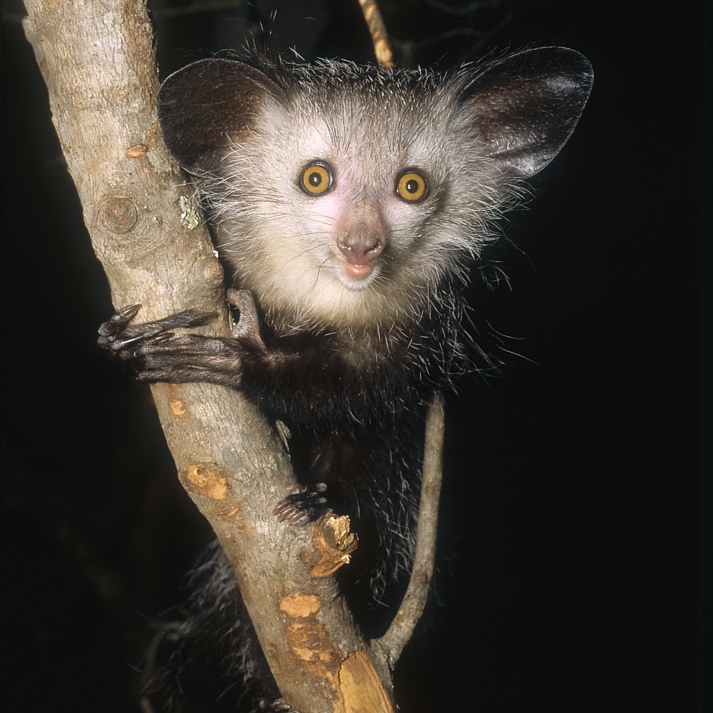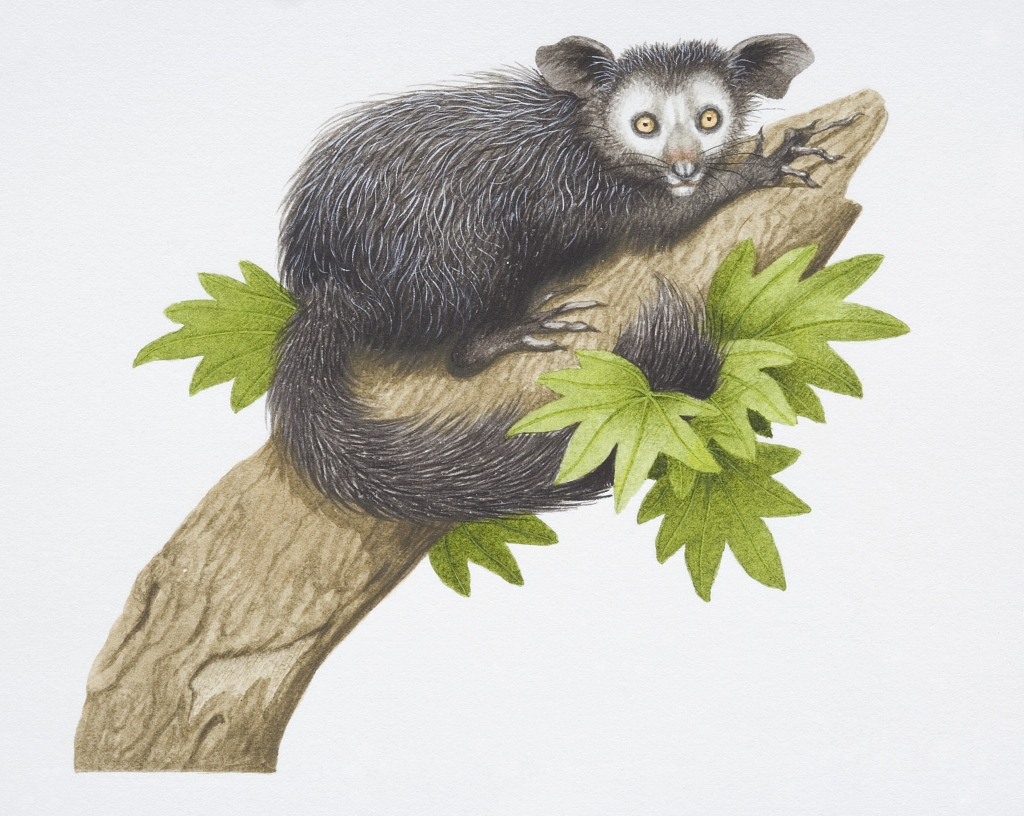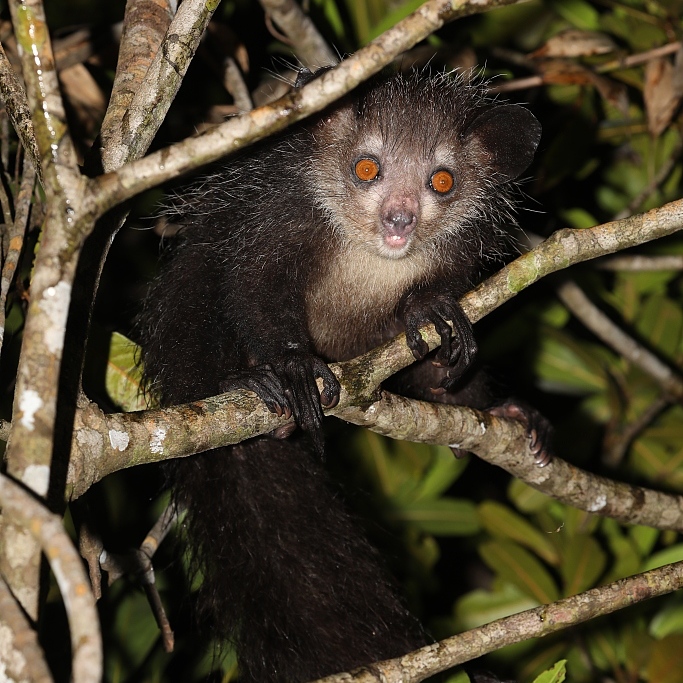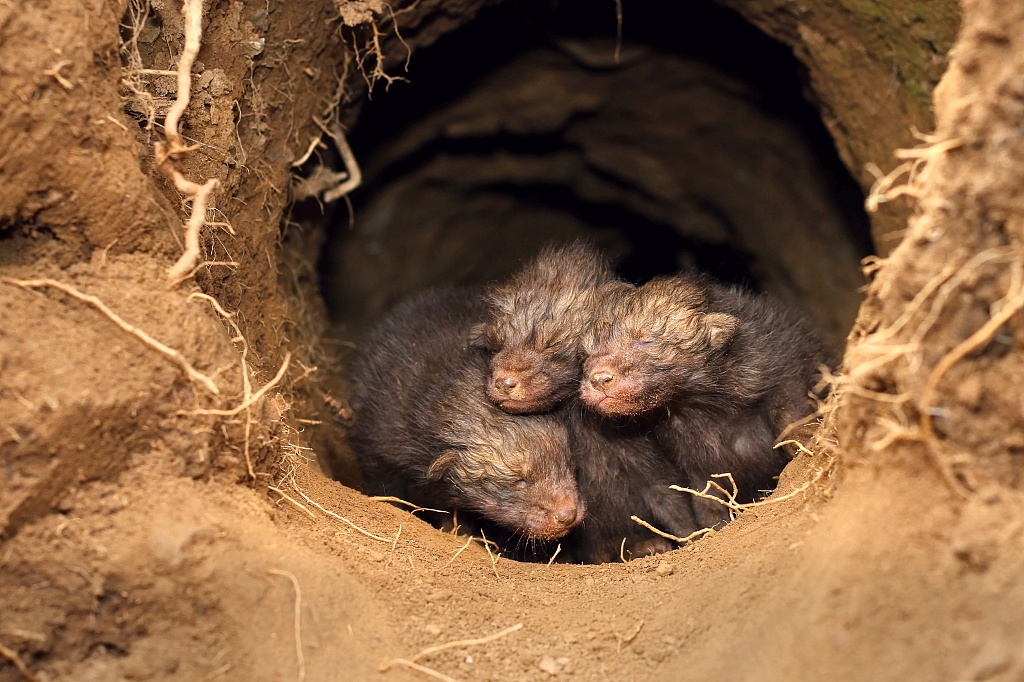
Aye-aye is a type of lemur. /VCG
Aye-aye is a type of lemur. /VCG
This small animal is aye-aye. For a long time, it has been thought to be a rodent because of its rodent-like front teeth. Only until recently has it been found that the aye-aye is a specialized lemur.
Lemurs only exist in Madagascar, and most existing lemurs are small, have a pointed snout, large eyes, and a long tail.

Illustration of an aye-aye. /VCG
Illustration of an aye-aye. /VCG
One explanation of aye-aye's name is that it derives from the Malagasy phrase "heh-heh," which means "I don't know." If this is true, it could be that Malagasy people used "heh heh" to avoid saying the name of a feared, magical animal.
The reason why this small animal, the size of a cat, is a "demon animal" to the locals might be because of its appearance. Its round yellow eyes in the dark along with its bony long fingers tapping on tree branches continuously resembles a cat that might have been bitten by a vampire.

Aye-ayes are nocturnal animals. /VCG
Aye-ayes are nocturnal animals. /VCG
The aye-aye has a long and skinny middle finger, which comes in handy when it looks for food. It would tap on trees to find grubs, then gnaw holes in the wood using its teeth to create a small hole in which it inserts its narrow middle finger to pull them out.
The local Malagasy people think that when the aye-aye points its middle finger at someone, they are marked for death. Therefore, this species is considered evil and often killed on sight.
The mass reduction of the size of Madagascar forests has also contributed to the decrease in aye-aye's population, making it now an endangered species.

Aye-aye cubs in their nest. /VCG
Aye-aye cubs in their nest. /VCG
Primates in jeopardy
As the most common primate on Earth, homo sapiens share the same order with other 512 species across 93 countries. Non-human primates are our closest relatives on this planet. They play a significant role in various types of ecosystems, from the mysterious tropical forests to the grand African savannas, their intelligence is fascinating and sheds light into studies of human society and behaviors.
However, many species of primates are on the brink of extinction. The series "Primates in jeopardy" is based on the list "World's 25 Most Endangered Primates (2018-2020)" co-published by IUCN SSC Primate Specialist Group (PSG), International Primatological Society (IPS), Global Wildlife Conservation (GWC) and Bristol Zoological Society (BZS).
This is the tenth iteration of a biennial listing of a consensus of the 25 primate species considered to be among the most endangered worldwide and the most in need of conservation measures.
(All photos via VCG. Cover image designed by CGTN's Chen Yuyang.)
(If you want to contribute and have specific expertise, please contact us at nature@cgtn.com)